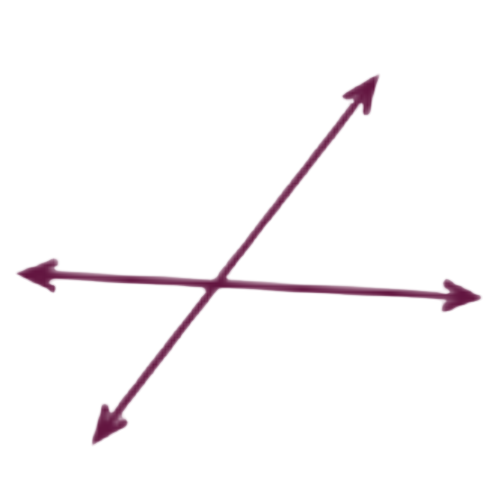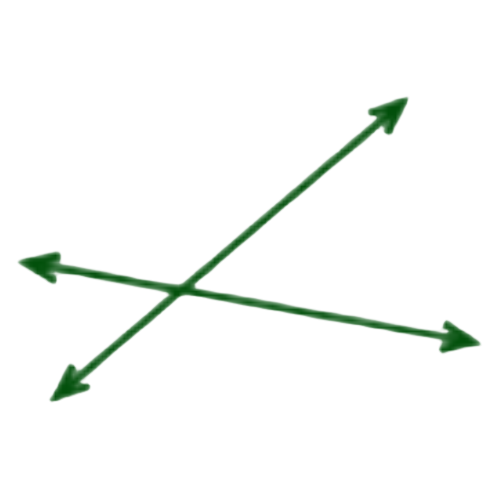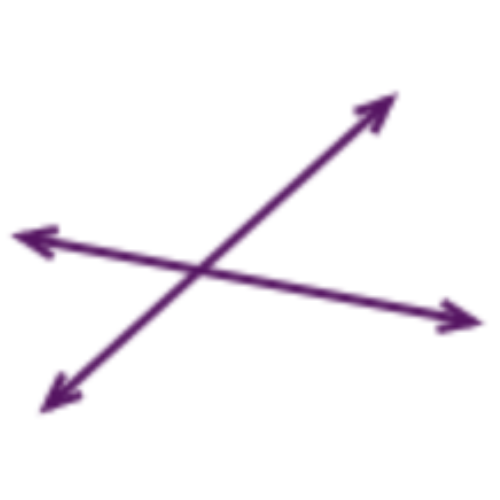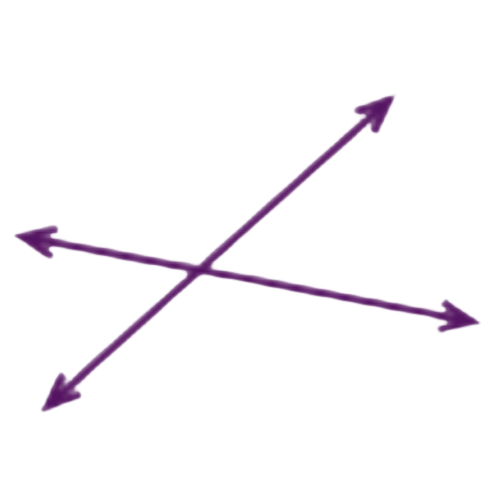Parallel, perpendicular and intersecting lines
Key notes:
1. Definitions
- Parallel Lines: Two lines that are always the same distance apart and never meet, no matter how far they are extended. They have the same slope.

- Perpendicular Lines: Two lines that intersect at a right angle (90 degrees). The slopes of perpendicular lines are negative reciprocals of each other.

- Intersecting Lines: Two lines that cross each other at any angle. They meet at a point called the point of intersection.

2. Properties
- Parallel Lines:
- Symbol: || (e.g., line A || line B)
- Example: Rails of a train track.
- Perpendicular Lines:
- Symbol: ⊥ (e.g., line A ⊥ line B)
- Form right angles at the point of intersection.
- Example: The corner of a square or rectangle.
- Intersecting Lines:
- Can form various angles.
- Example: The intersection of two roads.
3. Identifying Lines
- Use a ruler to draw and identify the types of lines:
- For parallel lines, ensure they are equidistant.
- For perpendicular lines, use a protractor to check for a 90-degree angle.
- For intersecting lines, simply draw two lines that cross.
Learn with an example
📢 Are these lines perpendicular?

- yes
- no
Look at this figure:

These lines are not perpendicular. They intersect but do not make square corners.
📢 Are these lines parallel?

- yes
- no
Look at this figure:

These lines are not parallel. They intersect at one point.
📢 Are these lines perpendicular?
- yes
- no

Look at this figure:

These lines are not perpendicular. They intersect but do not make square corners.
Let’s practice!🖊️

